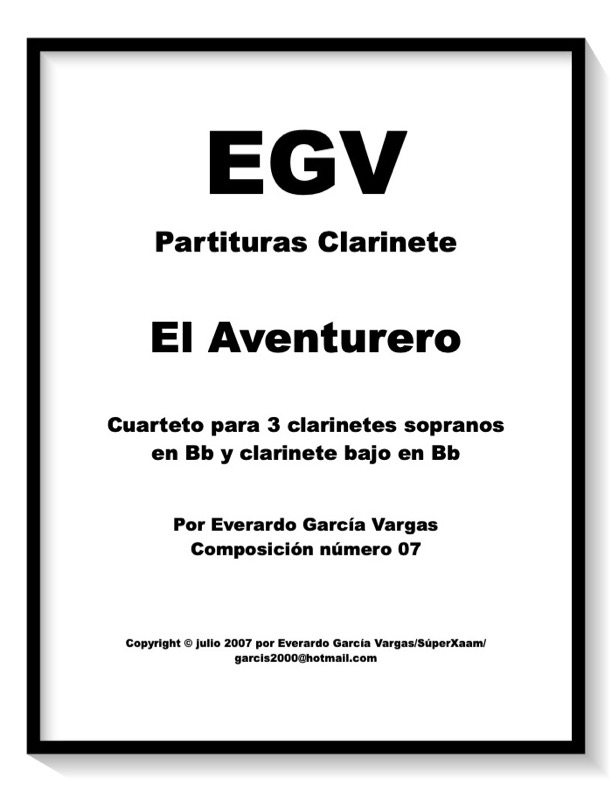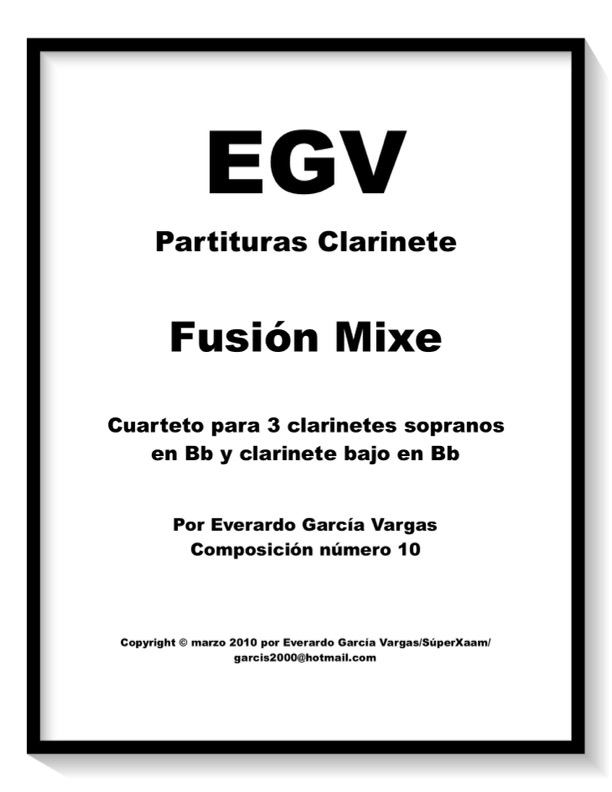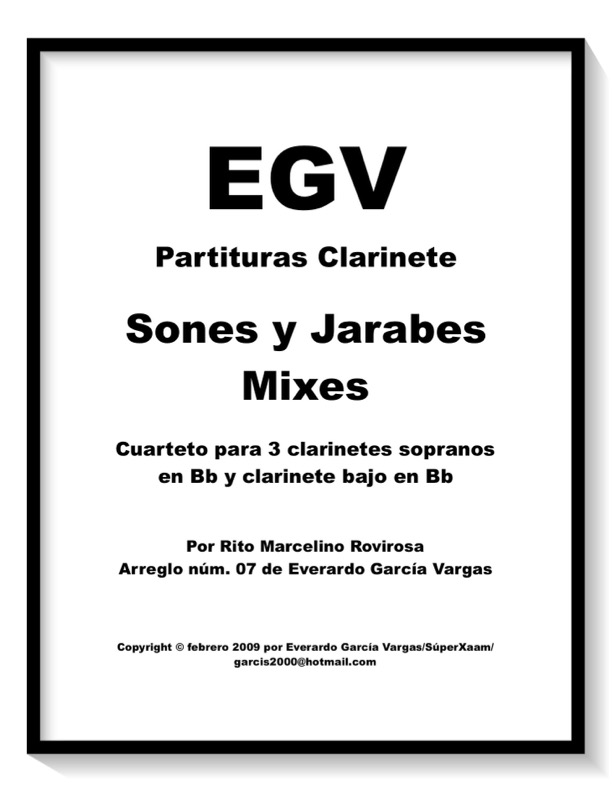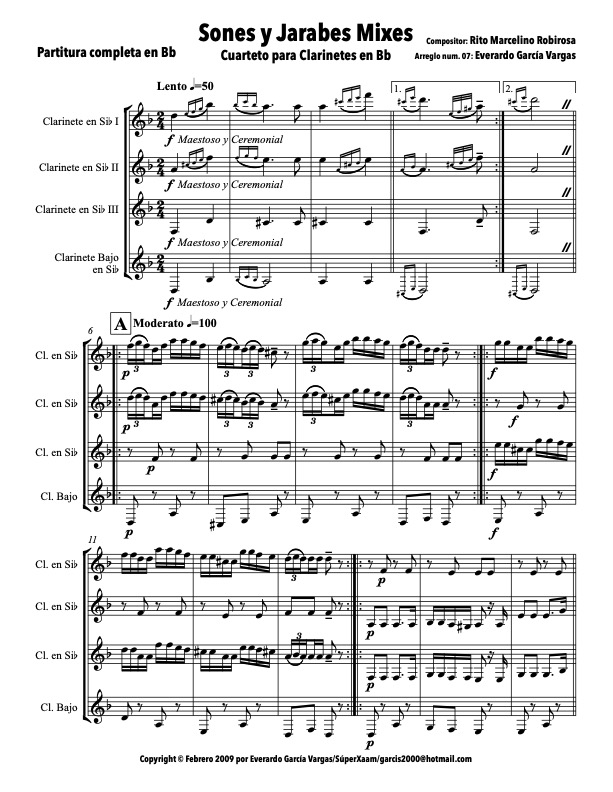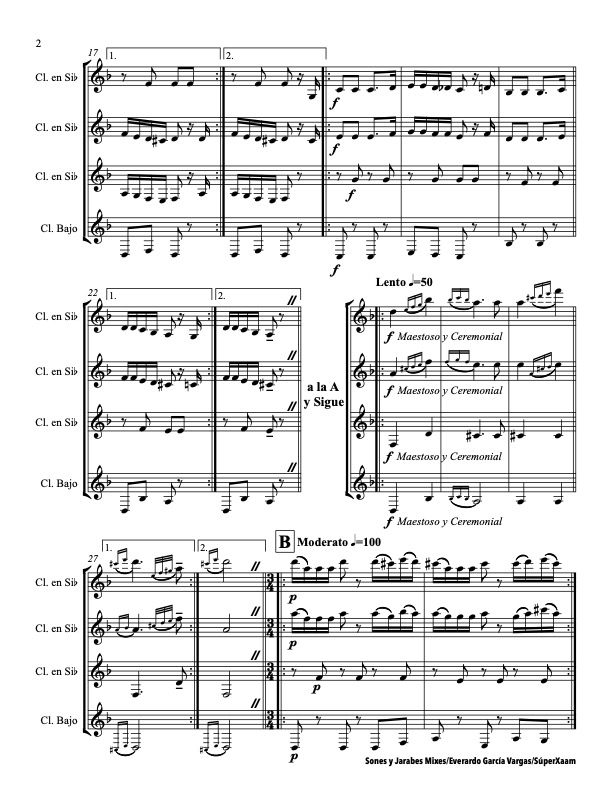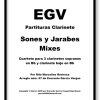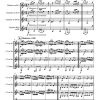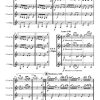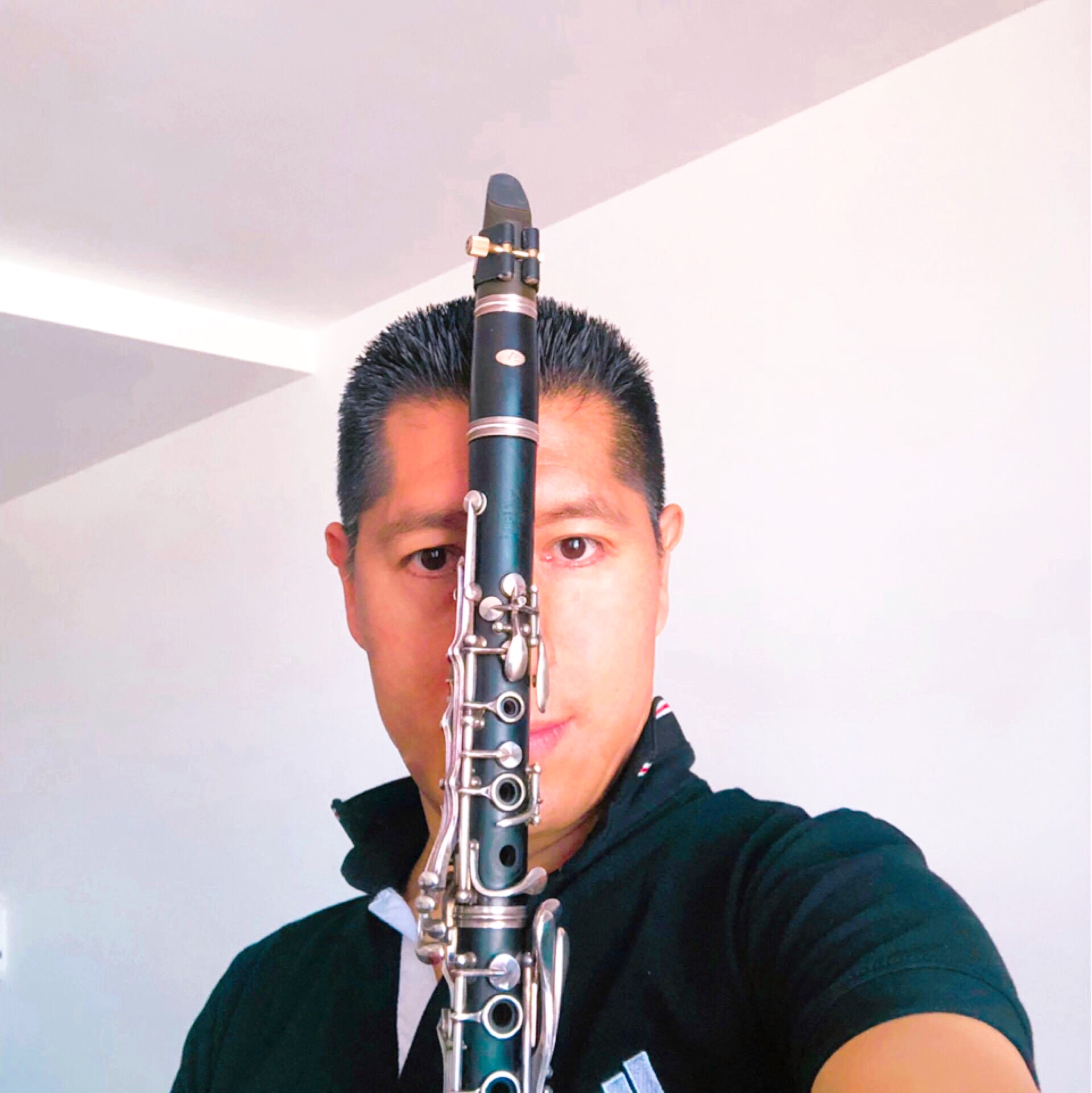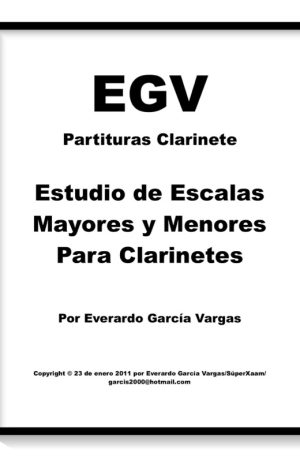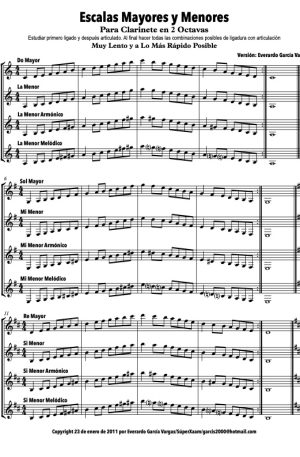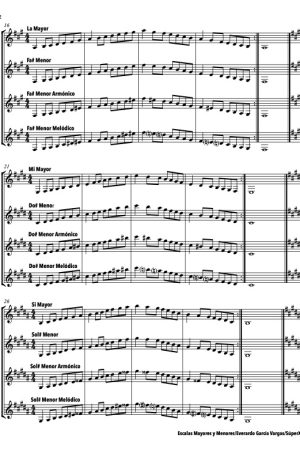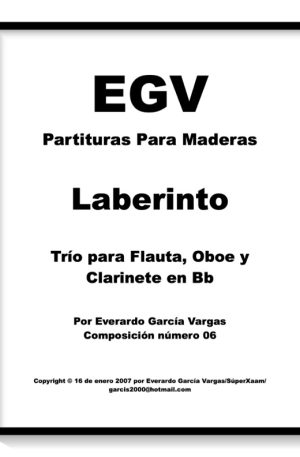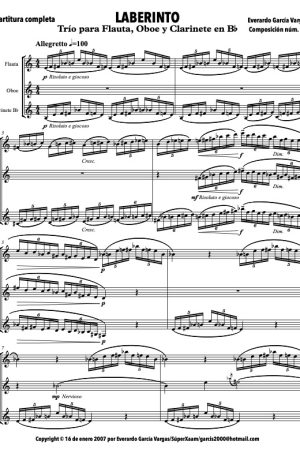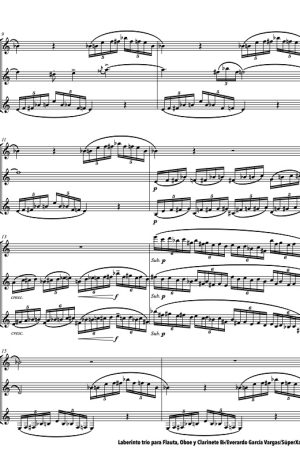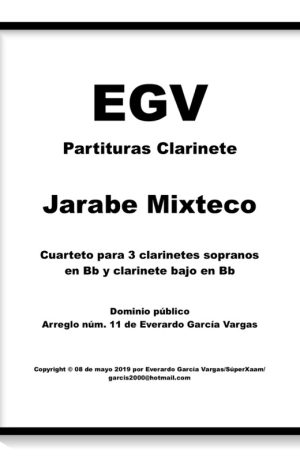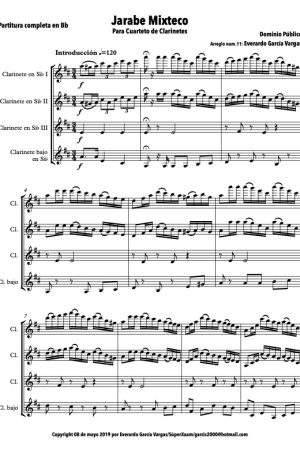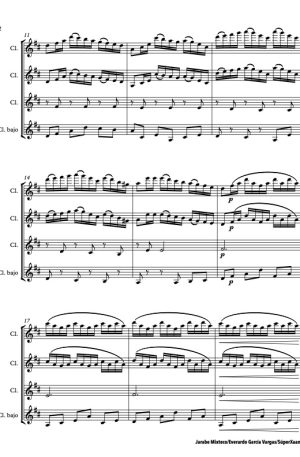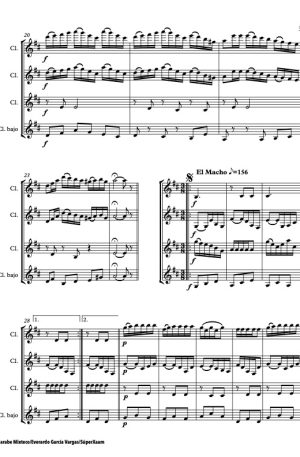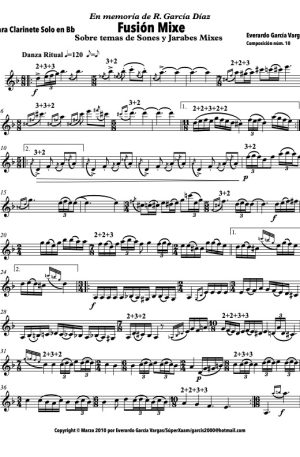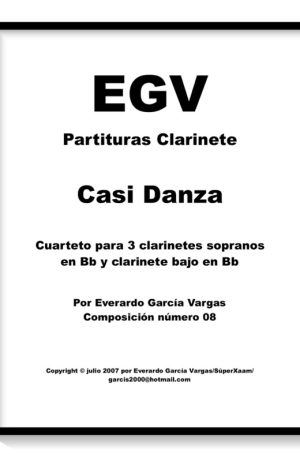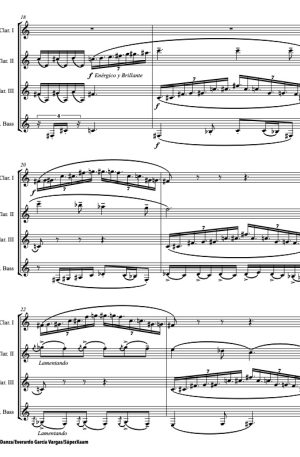SONES Y JARABES MIXES Clarinet Quartet – Arrangement by Everardo García
$34.00
Description
SONES Y JARABES MIXES Clarinet Quartet
The ceremonial musical piece “Sones y Jarabes Mixes”, composed by Rito Marcelino Rovirosa, is widely recognized as one of the representative hymns of the Mixe region. In addition to being a musical piece, it is also a dance that is an integral part of the Mixe culture of the state of Oaxaca, Mexico. The same author also composed a specific hymn for the region entitled “Himno Mixe”.
In the tradition and customs of this region, ceremonies and rituals are performed to thank or ask natural powers such as lightning, wind, water, sun, mountain, mother earth and king “Konk ëy” (good king), who represents the link with the sacred. These ceremonies may have the objective of having a good harvest, warding off a supernatural evil, improving living conditions, having economic abundance or a good year. During these ceremonies, drinks such as tepache and mezcal, food and music, including sones and jarabes for dancing, are offered.
Rito Marcelino Rovirosa, is an illustrious Mexican composer known as the “son of the Mixe mountains.” He was born in Asunción Cacalotepec, Mixe, Oaxaca on April 7, 1908 and died in Santiago Zacatepec Mixe, Oaxaca on July 5, 2000 at the age of 92.
Rovirosa left a legacy of more than 200 works that extended beyond his region and were performed by the philharmonic bands of almost all the states of the Mexican Republic. Among his creations are Mixe sones and jarabes, Mixe anthem, the Mixes, Mixe fandango, Mixe race, King Condoy, Lustre, Animated party, Happy widow, Joy of my soul, New hope, My countryman and Mountain bird. However, not all of his works were known or recorded; He left many unpublished and even wrote several pieces at the request of other musicians who asked him to leave them without a title or authorship.
Marcelino Rovirosa lived like any other peasant; he dedicated his time to taking care of his coffee, corn and bean crops. The nights were his favorite times to write his works, inspired by nature, the song of birds and the coexistence with his countrymen.
No one would have imagined that an indigenous Mixe would transcend with his music beyond the Mixe border. In the decade of the forties of the last century he was humiliated by the boss of his town who sent him to jail falsely accusing him. He was taken on foot tied by the hands and held by a rope by the guards from his native Asunción Cacalotepec to the district capital of Santiago Zacatepec, a town that would adopt him later, after walking more than 10 hours in the middle of the mountains he was taken directly to jail where he remained for three years.
While in prison, his growing fame as a good musician reached the ears of the town authorities, the public prosecutor, the judge who was handling his case, and also Don Luis Rodríguez Jacob, leader of the community and the Mixe district. Despite being deprived of his freedom, he enjoyed some preferential treatment that the others did not have. He was included in the music band that traveled to the city of Oaxaca, along with the municipal authorities to participate in an official event that turned out to be a great success. At the end of the mission and on his return to Zacatepec, Don Luis Rodríguez asked the music teachers and the distinguished Marcelino Rovirosa to write a melody representative of the Mixe region. Rito returned naturally to the municipal jail and got to work; they provided him with lined paper and a pen, and in a few days the requested work was ready and he titled it “fandango mixe,” a name suggested by Don Luis Rodríguez.

